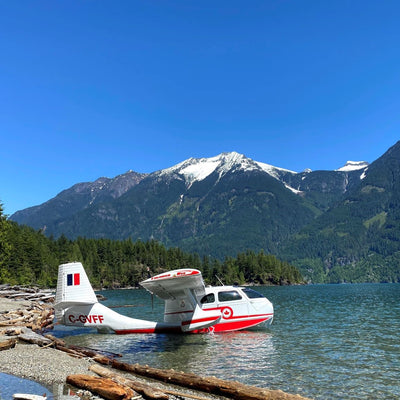Lug-All Spotlight - Flying the British Columbia Wilderness

OVERVIEW
One Lug-All customer we talked to recently is an amateur pilot from Canada. He flies his pair of amphibious planes around British Columbia to explore the vast wilderness of the mountain region. Because the amphibious planes are capable of landing on either land or water, he can access remote areas that would otherwise be unreachable. He often packs camping gear and uses his planes to find remote camping locations.
1001 USES
 This pilot told us that the amphibious planes tend to get stuck when he has landed on soft ground. Because he can access such remote locations, he often lands near mountain lakeshores with shallow beaches. Without any other equipment, he has to free his stuck planes manually. To do so, he uses Lug-All winch hoists to pull the planes onto more solid ground or deeper water where they can take off.
This pilot told us that the amphibious planes tend to get stuck when he has landed on soft ground. Because he can access such remote locations, he often lands near mountain lakeshores with shallow beaches. Without any other equipment, he has to free his stuck planes manually. To do so, he uses Lug-All winch hoists to pull the planes onto more solid ground or deeper water where they can take off.
WHY LUG-ALL
When a plane gets stuck on a beach, the only practical alternative to pulling the planes with a Lug-All come along is to dig out the soft ground with a shovel until they come loose. However, digging requires a lot of labor and time. On the other hand, a Lug-All come along ratchet winch hoist can be anchored to any solid object nearby to pull a plane out quickly with minimal effort.
One additional benefit of a Lug-All winch hoist is its size. He mentioned that he keeps a Lug-All winch hoist in both planes in case he ever gets either one stuck. He uses web strap hoist model 1000-A, which offers 1,000 pounds of lifting capacity and can pull objects weighing much more. The 1000-A is part of Lug-All’s Lightweight line, which means it is lighter and more compact than other Lug-All winch hoists. The lightweight design makes it easy to pack in his planes with the rest of his gear, which means he always has a Lug-All come along on-hand any time he ever needs one.
